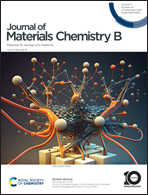Platinum based theranostics nanoplatforms for antitumor applications
Abstract
Platinum (Pt) based nanoplatforms are biocompatible nanoagents with photothermal antitumor performance, while exhibiting excellent radiotherapy sensitization properties. Pt-nanoplatforms have extensive research prospects in the realm of cancer treatment due to their highly selective and minimally invasive treatment mode with low damage, and integrated diagnosis and treatment with image monitoring and collaborative drug delivery. Platinum based anticancer chemotherapeutic drugs can kill tumor cells by damaging DNA through chemotherapy. Meanwhile, Pt-nanoplatforms also have good electrocatalytic activity, which can mediate novel electrodynamic therapy. Simultaneously, Pt(II) based compounds also have potential as photosensitizers in photodynamic therapy for malignant tumors. Pt-nanoplatforms can also modulate the immunosuppressive environment and synergistically ablate tumor cells in combination with immune checkpoint inhibitors. This article reviews the research progress of platinum based nanoplatforms in new technologies for cancer therapy, starting from widely representative examples of platinum based nanoplatforms in chemotherapy, electrodynamic therapy, photodynamic therapy, photothermal therapy, and immunotherapy. Finally, multimodal imaging techniques of platinum based nanoplatforms for biomedical diagnosis are briefly discussed.

- This article is part of the themed collection: Journal of Materials Chemistry B Recent Review Articles


 Please wait while we load your content...
Please wait while we load your content...